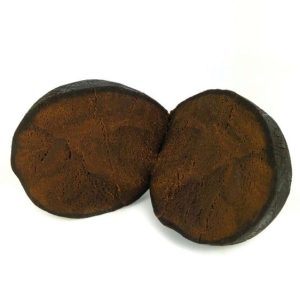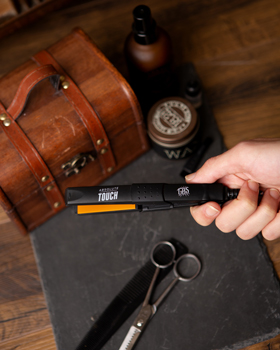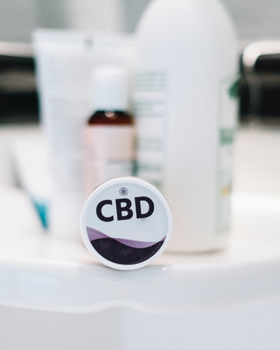Hash is an umbrella term for pressed cannabis, but there are many different types of hash. The biggest differences are in the method of production, because not all hash varieties are simply pressed and marketed directly. We tell you which different types there are!


Hand-rolled and ancient - finger hash from cannabis flowers
Finger hash is one of the oldest varieties of hashish and is simply made by hand without any special techniques. This form of hashish originated in India, which is why it is also known as Indian Chara. To produce finger hash, various components of the cannabis plants are rubbed back and forth between the fingers or hands.
A kind of oil collects on the palms, which contains numerous trichomes that are responsible for the effect. This oily, very sticky layer is then rubbed off the fingers and pressed into small blocks.
Although the technique sounds simple, finger hash has some exciting properties and is not at all easy to produce. On the one hand, there is the soft, somewhat moist consistency and, on the other, the dark colour that comes from the process of rubbing. To this day, finger hash is considered a delicacy and is often used, for example, to use residual parts of flowers or stems.
Ketama-Gold Hash - Moroccan Style Marijuana
Pollen lovers will appreciate Ketama hash very much. It originates from Morocco and is still produced there by the people. The special feature is the cold pressing, with which the components such as flavonoids, terpenes and cannabinoids (CBD, CBN etc.) are preserved in the later cannabis concentrate.
Ketama hash is often a less strong variety that is available in different flavours. The intense flavour and aroma come from the interaction of terpenes, flavonoids, trichomes and cannabinoids. The method of production requires some technical skill, but is now known all over the world.


Ice-o-Lator hash - the special production in view
Ice-o-lator hash is nicknamed bubble hash and is produced by using freezing techniques. It is a product that is often produced in-house, as other techniques are used in classical production today. Bubble hash only needs ice water and various sieve bags to produce it. The available weed is mixed with ice and water and thoroughly shaken to extract the trichomes. Basically, different colours of concentrates are possible here, the quality of aroma and taste increases with the brightness.
Bubble Hash is so popular in the coffeeshop, among other things, because it is produced without the use of solvents and the cannabis buds release their resin through the ice.
Rosin-Hasch - Cannabiskonzentrate in besonderer Form
Auf der Liste der einfach und lösungsmittelfrei herzustellenden Hasch-Sorten ist Rosin-Hasch der König. Es wird durch Hitzepressung hergestellt und löst so die Trichome von der Pflanze. Für den Heimgebrauch hat es sich etabliert, mithilfe eines Glätteisens und Pergamentpapier selbst Rosin-Hasch herzustellen. Hierfür werden die Cannabisblüten zunächst in ein Pergament- oder Backpapier gelegt, welches anschließend im Glätteisen für wenige Sekunden erhitzt wird. Das flüssige Harz tritt aus den Trichomen aus, die anschließend abgekratzt und wahlweise gerollt oder gepresst werden. Bubble Hasch gibt es in zahlreichen verschiedenen Sorten, da jede Cannabispflanze und alle Cannabisknospen für die Herstellung verwendet werden können.


Dry-Sift-Hash - different cannabis strains with a special production
Many of you probably know Dry-Sift-Hash by the name Kief. It is a concentrate that originally comes from Morocco. This type of hash gets its name from the way it is produced. Kief is a powder-like substance produced by separating the trichomes from the rest of the plant.
Kief belongs to the high-quality extracts and is actually easy to produce. However, since there is a lot of waste, it takes an enormous number of cannabis buds to produce larger quantities. For these reasons, those who produce kief in the private sector usually only use leftovers that are produced anyway. For example, in a Grindr, where kief is automatically formed when the flowers are crushed.
Cannabis Wax - the creamy form of hashish
Cannabis wax belongs to the BHO varieties. To produce it, butane gas is needed to reliably extract terpenes and cannabinoids. This method of production is not entirely harmless, which is why it is used rather rarely compared to classic cold pressing. Cannabis wax is visually reminiscent of beeswax and is also very similar in terms of consistency. The concentration of cannabinoids is very high, which is why the wax is also considered one of the most potent hash varieties. The individual waxes have different names on the market, the best known being crumble or honey hash.


Shatter hash - the strong variety with intense effects
One of the strongest hash varieties on the market is shatter hash. Here, too, the base is a butane hash oil (BHO)l that has been extracted with the help of butane gas. Shatter looks a bit like wax, but the consistency is somewhat harder. The product gets its name from the fact that it shatters very easily. If you hold a piece of Shatter up to the light, you will notice a strong translucency. Similar to Wax, Shatter is all in all one of the strongest varieties on the market.
Tradition vs. modernity - how the hash market has changed
In countries like Morocco and India, hash has been made by hand and without technical aids for centuries. Those who don’t like classic blocks simply consume weed there. With the advancement of technologies, entirely new results and categories in hash have emerged. Variants such as shatter hash or wax are the equivalent of what is produced in tradition-conscious countries.
A long-established hash producer from Morocco is probably not even familiar with words like shatter and wax.


Moon-Rocks - the refined form of hashish
Hash connoisseurs are no strangers to terms like moon rocks or ice rocks. These are classic buds that are then dipped in a liquid BHO hash. They are then rolled through kief to give them their special structure. Moon rocks are popular mainly because of their intense effect. Since different hashish varieties are combined here, an intense high is to be expected with the THC-containing variant.
However, moon rocks are also available as a legal marijuana form, made from useful hemp flowers and accordingly without THC or with a maximum content of 0.2 %. These hash varieties are not only legal, but also very trendy, as CBD is said to have multiple effects as a cannabinoid.
Are all types of hashish legal or is there a prohibited version?
When we talk about hashish, we usually first think of those types that can induce a high. Over the years, the black Afghan or numerous other varieties have become emblematic of intense states of intoxication caused by different cannabis strains. But in the meantime, the world of hashish has evolved.
On the one hand, there are flowers that come from the classic marijuana plant. They contain THC and are seen all over the world as a symbol of hashish. On the other hand, there is now also a more widespread use of commercial hemp. These are plants that have been produced from non-feminised commercial hemp seeds. And it is precisely with this that hashish can be obtained, which can be used legally and without the risk of intoxication.
Whether hashish is legal does not depend on the type of hashish, but on the information about its content. In the EU, for example, a THC content of 0.2% is permissible. If hashish has a higher content, it is prohibited.


CBD hash - the choice is wider than ever
We automatically associate hash with cannabis plants containing THC. Large parts of the EU have banned cannabis because it is considered intoxicating. However, depending on the location, it is perfectly legal to use CBD cannabis. Almost all EU countries have not enacted any bans here, so the variety of hashish also plays an important role here.
Depending on the technique used, CBD content and hashish variety, the effects vary greatly. In general, CBD hash is mainly used to alleviate various complaints and to increase well-being in everyday life. However, the classic hashish varieties made from THC serve as a model for the production of different varieties.


